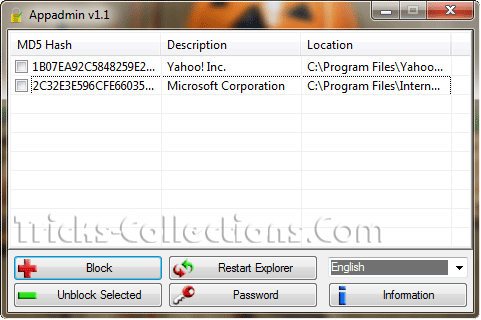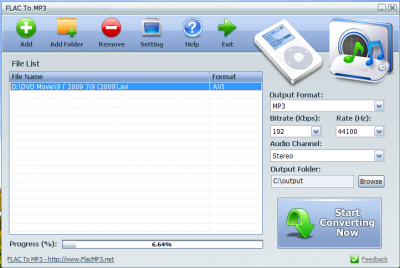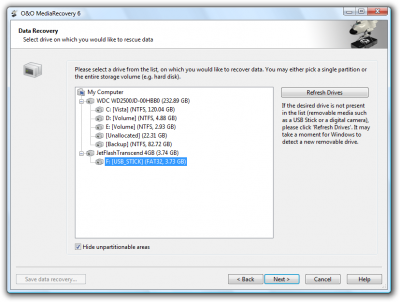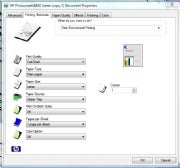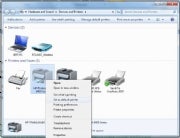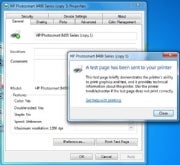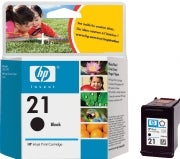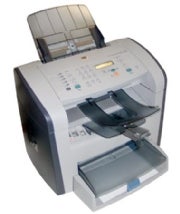1. Read the book. I cannot begin to tell you how many people have brought their printer to my shop with the User Manual and paid my wife (no computer expert) $32.50 to sit-down, read the book, and fix the printer. Unfortunately, some printer books aren't worth reading...
2. Check the manufacturer's web site. The problem you are having has most likely happened before. If the manufacturer has a good web site, you may find the answer there and save a lot of time, money, and frustration. Go to our Manufacturer Linkspage to get there fast.
3. Is it plugged-in? Make sure the printer is plugged into a live outlet. If it is plugged into a surge protector, make sure it is on. Try moving it from the surge protector to a known-good wall outlet.
4. Is it on? Ok, you can't print and Windows, etc. says it can't find the printer. Make sure the darn thing is turned on and there are no error lights (LEDs) lit. If there are error lights, refer to the user manual/manufacturer's web site. You should hear the print mechanism initialize when power is applied and most printers have at least one light which will be illuminated when it is on.
5. Is it on-line? Most printers have and on-line LED and button or the equivalent. The computer cannot communicate or send stuff to a printer that is not on-line; i.e., not connected to the cable between the printer and computer, and that is what "on-line" literally means. Again, I have gone to customer sites, pushed the on-line button, and charged them for my time and travel (I try to accomplish at least that much on the phone, but some...).
6. Is it beeping at you? Most printers will beep once or twice during or after initialization. If it beeps more than that or beeps constantly, the poor thing is either hurt or trying to tell you something is wrong. Look in the manual or go to the web site to learn what it is saying. Unfortunately, beep code documentation can be hard to find, the beep you hear may not listed, or the meaning of the beep is nebulous. Most, printers will beep when out of paper or out of ink and those are the most common causes for a printer turning into a road runner.
7. Does it test-print? Most printers have a built-in diagnostics program which can be very useful for troubleshooting problems and test-printing without a computer. They are usually initiated by pressing a button or two while turning on the printer. Check your user manual. If the printer test-prints OK, you have probably eliminated the mechanical print mechanism as the problem.
8. Does it have ink or toner? Is the Ink cartridge full, ribbon installed correctly, or laser cartridge full? An ink jet printer may have a black and a color cartridge. Check both of them or at least set the printer to use a cartridge with ink in it. You can usually extend the life of a laser cartridge long enough to order a new one by removing the cartridge and gently shaking it side-to-side to redistribute the tone. Sometimes you can get a ribbon going temporally by removing from the printer and manually advancing the ribbon past a worn spot by turning the sprockets.
9. Is it clean? Most ink jet printers have a simple user procedure for cleaning the print heads. You may have to clean them periodically or after the printer has been idle for a few days or weeks. If you see funny colors or print-outs are missing colors, a cartridge may be empty or a head dirty. You may have to clean a head many times to get it working again.
10. Does it have paper? Be sure the paper is installed correctly and there is enough of it. Most printers have a paper-out detector. On most dot matrix printers it is a photo diode. If form-fed paper is not aligned correctly (usually on the left side) the diode won't see it. DOS may indicate it has lost communications with a printer which is out of paper instead issuing a paper-out error.
11. Is it jammed? Paper jams are frequently the reason my wife is able to fix many printers. She's very good at it (and she has smaller fingers than mine). Always read the manual on how to clear a jam. Don't be a "gorilla" with your printer! You can easily damage a printer (strip gear threads, etc.), or even get hurt, if you do not follow instructions and are not careful. Turn the power off--unplug it. You have 110 volts running around the inside many printers. And print heads, gears, etc. like to nip fingers.
Laser printers have some very fine wires to remove static charges from the paper near the fuser mechanism which will break if you aren't very careful. Also, the fuser itself can be very hot (it fuses/melts toner to the paper).
Don't move a print head unless the instructions direct it. You can damage the belt, etc.
Address labels cause many paper jams and cannot always be seen. The old shirt cardboard trick can be used to dislodge them from many printers. Just feed a shirt cardboard (or cut a piece of like-sized cardboard form a file folder) through like a sheet of paper and wiggle the label loose and out.
Staples, paperclips, dog hair, and cookie crumbs are among the many things we have coaxed out of printers. A staple will raise havoc with the drum in laser printers. If you see vertical lines on pages printed by a laser printer (or copy machine), the drum is probably scratched. Replacing it can be a very expensive repair, indeed.
If jams persist, or the printer won't feed paper, there is a good chance that gears are stripped or rollers are worn-down or have flat spots. Fixing this sort of problem may require specialized tools and elaborate alignment procedures and is often best done at a printer repair depot. It is not usually economically feasible to send low-end ink jet and dot matrix printers, etc. to a repair depot. Sometimes roller problems can be fixed by cleaning the rollers.
Changing to a different kind of paper may help. Refer to your user manual for guidance.
On humid days, slightly damp paper can cause jams by sticking together causing more than one sheet to be fed at a time. Try removing the paper from its tray, etc. and fanning it. Make sure the edges or corners aren't curled and the tray is either not too empty or too full. Read the book...
Then there are those printers which no one can figure-out how to dissemble without damaging them...
12. Is it wedged? The printer memory could be full or there may my a glitch caused by a power spike. Turn-off the printer, wait a few seconds and turn it back on.
CABLE
13. Is it connected? The printer test prints, but it won't go on line... Well, is the cable from the printer to the computer connected. Screw down the DB-25 connector at the computer end and clip the Centronics connector at the printer end (your printer and computer may have different connectors; e.g., USB). Push-in and wiggle the connectors.
14. Is it connected to the printer port? Some SCSI (Small Computer System Interface) are physically identical to the male DB-25 connectors used for standard IBM/IBM-compatible printer ports. Plugging a printer into a SCSI port can damage the SCSI host board and the printer.
15. Do you have the correct cable? Many printers now require an IEEE 1284 and Bi-Directional. USB cables shouldn't be longer than 15 feet.
16. Is the cable good? Check for bent pins. Try another cable.
17. Is it connected properly? Screw the PC end down and latch the Centronics end at the printer.
18. Is there something else connected to the printer port? Disconnect it and uninstall the device drivers for it.
19. Does the printer port have a software security device on it? These devices attach to the printer port and the printer cable attaches to the device. They can break. Try printing without it.
COMPUTER
20. Is the printer port configured correctly in your computer's BIOS Setup? Try the various printer modes in your computer's CMOS Setup. ECP+EPP usually works with bi-directional printers, but others may fix the problem.
21. Is the correct printer cable/header assembly installed and is it plugged-in right? I have seen cases where a baby AT motherboard was upgraded, but the printer cable/header assembly from the old motherboard was used and caused problems, but that is very rare. Also, the cable connecting to the motherboard could be backwards or loose.
DOS
22. Does it print from the DOS prompt? Try F8 (F8 or hold the Ctrl Key for Win 98) just as Windows starts to boot, select the DOS prompt from the resulting menu, find a non-zero length text file (one that is 1-2K would be a good choice) (e.g., autoexec.bat or something ending in .txt), and print from DOS with:
C:\>type autoexec.bat>lpt1:
or
C:\>type filename.txt>LPT1:
Click Cancel, turn the printer off, unplug the printer cable, wait a few seconds, reconnect the cable, make sure the printer is on with no error lights, restart Windows, and try again.’ Try the various printer modes in your computer's CMOS Setup. ECP+EPP usually works with bi-directional printers, but others may fix the problem. Try F8 just as Windows starts to boot, select the DOS prompt from the resulting menu, find a non-zero length text file (one that is 1-2K would be a good choice) (e.g., autoexec.bat or something ending in .txt), and print from DOS with:
C:\>type autoexec.bat>lpt1:
or
C:\>type filename.txt>LPT1:
If that works consistently, the problem is probably in Windows.
WINDOWS
23. Is it set-up properly? Be sure Windows is set-up correctly with the correct printer driver and something else (another printer, FAX, etc.) is not assigned LPT1: Be sure the printer is set as the default Windows printer. Try it on another desktop computer. If that works, try another printer on the suspect computer. Uninstalling and reinstalling the printer often fixes problems. Get rid of duplicate printers.
24. Does it have a stuck print queue? Start>Settings>Printers>double click the printer> Printer>Purge Print Documents
25. Have you used Windows Help to solve the problem?Start>Help>Contents>Troubleshooting>Windows 98 Troubleshooters>Print.
Brian writes: The troubleshooters in win 98 no longer function bacause of updates for security.to use the troubleshooters now you must reinstall TSHOOT.INF and then remove the registry the key {4B106874-DD36-11D0-8B44-00A024DD9EFF} at [HKEY_LOCAL_MACHINE\Software\Microsoft\Internet Explorer\ActiveX Compatibility.
Then once one is done with the troubleshooters, reinstall the latest update for internet explorer 6. |
One should backup the Windows registry before making any chnges to it. Look in regedit help for the procedure... start, run, enter regedit.
